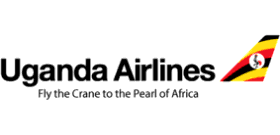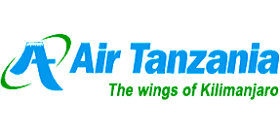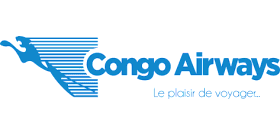Regional Connectivity Soars as LAM Mozambique Airlines Expands Fleet

The aviation sector in southern Africa is experiencing a significant transformation as LAM Mozambique Airlines embarks on a strategic fleet expansion and operational recovery plan. A key component of this initiative is the introduction of a wet-leased Airbus A319-100, sourced from Ukraine’s WINDROSE Airlines. This strategic maneuver is designed to bolster the carrier’s capacity and enhance its operational reliability, creating new prospects for air transport within the region and for its collaborative partners across sub-Saharan Africa.
With the integration of the 23-year-old A319, LAM’s operational fleet has now reached six aircraft, marking a notable achievement for the Maputo-based national airline. The current fleet composition reflects a pragmatic approach to fleet management, with only one aircraft being owned and the remaining five secured through various leasing arrangements. This latest addition is more than just a numerical increase; it signifies a deliberate move in LAM’s ongoing restructuring efforts, which are expertly guided by Knighthood Global Limited, a consultancy renowned for its success in airline turnarounds.
The wet-lease agreement, commonly known as ACMI (Aircraft, Crew, Maintenance, and Insurance), is pivotal to this strategy. Under this model, WINDROSE Airlines assumes responsibility for providing the aircraft, its operating crew, comprehensive maintenance, and necessary insurance, thereby ensuring a seamless integration into LAM’s daily operations. This approach is gaining traction among African carriers as it facilitates rapid capacity scaling without incurring the extensive long-term financial commitments or the complex operational challenges associated with outright ownership or traditional dry leasing. For LAM, this offers immediate operational flexibility and supports its ambitious goals to reinstate and expand its flight network, both domestically within Mozambique and regionally across Africa.
Beyond the newly acquired A319, LAM’s diverse leased fleet further includes three aircraft operated under ACMI by South Africa’s CemAir, comprising two CRJ-900s and a Dash 8-100. Additionally, a Boeing 737-500 is sourced from the Central African operator Via Air. The recent acquisition of a Bombardier Q400 further enriches this mix, enhancing LAM’s capability to efficiently serve both high-density trunk routes and less frequented regional sectors. This varied fleet, drawn from multiple lessors and aircraft types, highlights the airline’s adaptive strategy in leveraging partnerships to maintain service continuity and effectively respond to evolving demand.
The introduction of the A319 holds particular significance for Mozambique's internal and external connectivity. With its capacity for 144 passengers, the aircraft is ideally suited for key domestic and regional routes, promising a combination of operational efficiency and passenger comfort. This development is anticipated to support Mozambique’s broader economic recovery, facilitate increased business and leisure travel, and strengthen vital links with neighboring countries. For the wider sub-Saharan market, LAM’s expansion signals a renewed confidence in the region’s growth prospects and demonstrates the proactive willingness of African airlines to innovate amidst persistent operational challenges.
Industry observers note that LAM’s restructuring efforts are unfolding against a backdrop of wider systemic changes in African aviation. Carriers across the continent are increasingly adopting flexible leasing arrangements, forging strategic alliances, and seeking external consultancy support to navigate a complex operating environment characterized by currency volatility, regulatory hurdles, and dynamic passenger expectations. The involvement of Knighthood Global Limited in LAM’s turnaround strategy is indicative of a broader industry trend towards professionalized management and the adoption of international best practices, all aimed at restoring profitability and enhancing competitiveness.
For professionals engaged in Africa’s travel and aviation sectors, the implications of LAM’s evolving strategy are substantial. The expansion of LAM’s fleet creates new avenues for code-sharing agreements, interline partnerships, and joint marketing initiatives, especially with partners located in southern and eastern Africa. Moreover, it generates opportunities for ground handlers, maintenance providers, and training organizations to support a growing and increasingly modernized airline. As LAM solidifies its operational foundation, it is well-positioned to assume a more prominent role in regional air transport, thereby contributing to the broader integration and holistic development of Africa’s aviation ecosystem.
Looking forward, the ultimate success of LAM’s fleet renewal and restructuring will hinge on its ability to meticulously balance immediate operational requirements with its overarching long-term strategic objectives. While the wet-leased A319 provides an immediate and crucial boost, sustainable growth will necessitate continuous investment in human capital, refined processes, and robust partnerships. For African aviation professionals, the guiding principle is clear: adaptability, collaborative spirit, and a readiness to embrace innovative business models are indispensable for thriving in a rapidly evolving market. As Mozambique’s flag carrier charts this new course, its experiences offer invaluable lessons for airlines and stakeholders throughout the entire continent, underscoring that agility and innovation are the fundamental keys to unlocking Africa’s immense aviation potential.
You may also like...
Man Utd Future Unveiled: Ratcliffe Sets Three-Year Prove-It Deadline for Amorim

Manchester United co-owner Sir Jim Ratcliffe has affirmed his support for manager Ruben Amorim, advocating for a three-y...
Ronaldo Reaches Historic Billionaire Status, Leaving Messi Behind!
)
Portuguese football icon Cristiano Ronaldo has made history by becoming the first footballer to achieve billionaire stat...
Paramount+ Shocker: 'Dexter: Resurrection' Scores Season 2 Renewal After Month-Long Wait!

Paramount+ has officially renewed “Dexter: Resurrection” for a second season, signaling the highly anticipated return of...
Taylor Swift's 'Showgirl' Takes the World by Storm: Travis Kelce's Reaction and Record-Breaking Potential

On his 'New Heights' podcast, Travis Kelce reacted to Taylor Swift's new album, 'The Life of a Showgirl,' specifically t...
Louis Tomlinson's Heartbreak: Reflecting on Liam Payne’s Devastating Passing

Louis Tomlinson opens up about the profound impact of Liam Payne's death, describing the loss as "impossibly difficult."...
Brooklyn Beckham's Legal Woes Mount As He Faces Another Setback!

Brooklyn Beckham faces ongoing legal battles for his Cloud 23 hot sauce business, narrowly resolving a trademark dispute...
Dolly Parton Shakes Off Death Rumors Amid Terrifying Health Scare!

Country music icon Dolly Parton has personally addressed and debunked swirling rumors about her health, assuring fans sh...
Malala's Powerful Abuja Visit: Advocating for Girls' Empowerment from Pottery to Policy

Nobel Laureate Malala Yousafzai recently visited Nigeria to advance girls' education, engaging with local champions, you...




